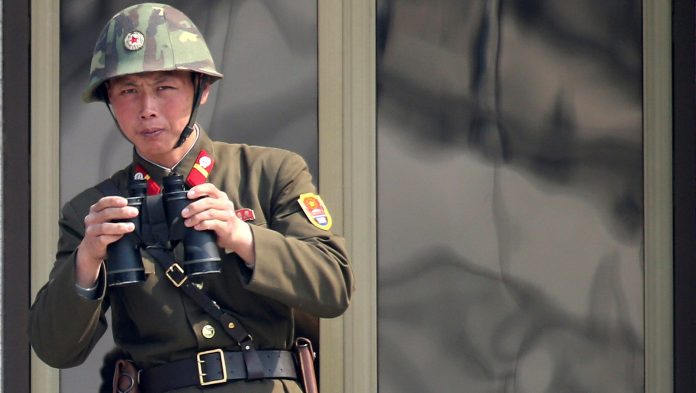This article is written by Himanshu Mahamuni, a student of Government Law College, Mumbai. This article analyzes the legal framework undertaken by North and South Korea to establish stability in the regions.
Table of Contents
Introduction
The Korean peninsula has been subject to a lot of instability throughout history. Before the 20th century the peninsula was ruled as a whole, but after colonization by Japan major changes took place which has divided the country on the 38th parallel demarcating the land into North Korea and South Korea. The changes have majorly taken place on the basis of political ideologies. The divide has also resulted in a Korean war that witnessed separation and bloodshed. The enmity has continued till time but steps for the reunification of the Korean peninsula have been demanded by both sides. The legal frameworks between both the countries consist of agreements for initiation of communication which aimed at reunification.
In this article, we will discuss the history of both the Countries which have led to the current hostile situation and various agreements signed by them to improve the situation.
History of the Korean peninsula
The history between North Korea and South Korea dates back to the second world war. Korea was a Japanese colony that got independence in the year 1945, after its defeat in the second world war. Eventually, the United States captured the Southern part of Korea along the 38th parallel and the Soviet Union captured the Northern part of Korea which was ruled for a period of 3 years. The cold war between the US and Soviet Union led to non-agreement on unification and left dividing the peninsula into two parts. The US declared South Korea as an independent country in 1948, electing a non-communist party. While a leader was appointed in North Korea whose family continues to rule till date.
The Korean war began in 1950 which continued for 3 years without any results. North Korea waged the war to capture the land in South Korea without any prior warning, which was in a weak state compared to North Korea. Then the Korean War saw the involvement and support of other countries. The US supported South Korea. The invasion of Communist China was seen in North Korea. Various other countries and organisations including the United Nations participated in it. This situation continued till 1953 where the countries were in a stalemate with an armistice agreement and no formal peace treaty, resulting in casualties of around 6,00,000 people.
This did not end the clashes between both countries in the Korean peninsula. North Korea constantly tried to assassinate the South Korean President in 1968 and also in 1983 while on a trip to Myanmar. Such attacks can be seen continuing from North Korea and retaliation from South Korea till now. This has increased the tension, even more, when North Korea started its Nuclear testing in the year 2006 which ended in 2017 with the sixth nuclear test. This act of North Korea was condemned and various sanctions were imposed by the US, UN, EU which has made the country a closed economy.
In 2018 both countries in the Korean peninsula met and gave hope to improve the situation between them. The meeting took place in the winter Olympics between the South Korean President Kim Yong Nam and the sister of the North Korean president Kim Yo Jong. This meeting was followed by an inter-Korean summit which promised to denuclearize the Korean peninsula, maintain permanent peace and demilitarize the border. North Korea soon declared that the nuclear blasts and intercontinental missile launches would cease immediately and the South Korean people were allowed to pass the border and meet their long-lost relatives. However, these hopes were short-lived when North Korea increased weapon testing in 2020 and subsequently destroyed the inter-Korean liaison office.
Legal Framework between North Korea and South Korea
South-North Joint Communiqué (1972)
The first talks for improving the relations and unification of the countries were held in 1972, also famously called The July 4 South-North Joint Communiqué. In order to mitigate the tensions and faster unification the countries reached on following agreements.
Three major principles to achieve unification were-
- Independently- without depending on foreign power and any such interference,
- Peacefully- no use of force against each other,
- National unity- transcend different ideas, ideologies and systems.
Two sides were not supposed to slander or defame each other. No use of the military either on a large or small scale and take positive measures. Installation of telephone lines to be done between Seoul and Pyongyang to deal with an unexpected military outbreak. Such other peaceful methods were to be adopted to expedite South-North Red Cross talks, for unification without a military presence.
This initial agreement was unable to proceed because of political instability in both countries. The real action plan on the lines of the communication was later made in 1991 which is the Agreement on Reconciliation.
Agreement on Reconciliation, Non-Aggression, Exchange and Cooperation between South and North (1991)
The Agreement on Reconciliation, Non-Aggression, Exchange and Cooperation between South and North, pledging non-aggression and cultural and economic exchanges was signed on December 13, 1991, by both the countries. A total of eight bilateral meetings were held between 1990 to 1992, this agreement being a result of it reconciling the countries together by avoiding aggression and hostilities. A mutual effort was promised to achieve a peaceful unification without military involvement. The agreement was divided into four chapters for the purpose South-North reconciliation, South-North non-aggression, South-North exchanges and cooperation, and amendments and effectuation respectively. This twenty-five article long agreement was hoped to be followed and achieve the long intended unification between both the countries.
Joint Declaration on Denuclearization of the Korean Peninsula (1992)
The Joint Declaration on Denuclearization of the Korean Peninsula was signed on January 20, 1992, between South and North Korea to remove the possibility of nuclear war on the Korean peninsula. This declaration aims at creating an environment and conditions for peace and unification of the Korean peninsula. It also contributes to peace and security in Asia and the World. This declaration sums the obligations in six broad points for both the countries, which are-
- No test, manufacture, produce, receive, possess, store, deploy or use nuclear weapons.
- Use nuclear energy for only peaceful purposes.
- No possession of nuclear reprocessing and uranium enrichment facilities.
- Inspection of the countries on each other to check on the activities as agreed by both sides.
- Establish and operate South-North Joint Nuclear Commission within 1 month of declaration.
- Commencement of declaration on the exchange of appropriate instruments by both sides following the completion of their respective procedure.
It was signed by the delegates of both countries and brought into effect. The US removed all the nuclear weapons on South Korean land because of the declaration.
Ten Point Programme for Reunification of the Country (1993)
In one of the efforts by North Korea, its president Kim Il-sung, in his visionary views to end the differences and reunify the country, led down the Ten-Point Programme. These programmes substantially helped to improve the relations of both the countries. The points propose to be not dependent on outside influence for the unification such as the US and reunification based on cooperation on trade and foreign affairs. The ten points programmes proposed by North Korea were as follows:
- A unified state, independent, peaceful, and neutral, should be found through the great unity of the whole nation.
- Unity should be based on patriotism and the spirit of national independence.
- Unity should be achieved on the principle of promoting coexistence, co-prosperity, and common interests and subordinating everything to the cause of national reunification.
- All manner of political disputes that foment division and confrontation between the fellow countrymen should be stopped and unity achieved.
- They should dispel fears of invasion from the South and from the North and suspicions of attempts to prevail over communism or achieve communization all together and believe in and unite with each other.
- They should consider democracy to be valuable and join hands on the road to the fatherland’s reunification, without rejecting each other for differences in doctrine and principles.
- They should protect the material and spiritual wealth of individuals and organizations and encourage it to be used favorably for the promotion of great national unity.
- All the fellow countrymen should understand, trust, and be united with one another through contacts, travels, and dialogue.
- All the fellow countrymen in the North and South and overseas should strengthen solidarity with one another on the way to the fatherland’s reunification.
- Those who have contributed to great national unity and the cause of the fatherland’s reunification should be highly esteemed.

South-North Joint Declaration (2000)
In a historic meeting between delegates of both the countries in Pyongyang a South-North joint Declaration was signed on June 15, 2000. A sense of reunification was reignited in peaceful ways by mutual understanding. Following declarations were made in the summit-
- Reunification on its own initiative by the countries and through the joint efforts of the Korean people.
- Acknowledgement of common ground in South’s confederation and North’s federation proposals.
- Resolving humanitarian issues such as the exchange meet of separated families and the question of long term prisoners.
- Mutual trust by economic cooperation and exchanges in civic, cultural, sports, public health, environmental and all other fields.
- Holding dialogues in near future for expeditious implementation.
Panmunjom Declaration (2018)
The Panmunjom Declaration for peace, prosperity and reunification of the Korean Peninsula is the latest and most comprehensive declaration adopted by the countries so far. This agreement was adopted on April 27, 2018 at the 2018 Inter-Korean summit and submitted to the United Nations General Assembly. This declaration is important because it laid down subjects which can achieve the long incomplete aims of the Korean peninsula. Leaders of both the nations assured their people that there will be no more wars between them. Following points were decided in the declaration for the objective of peace, reunification, and prosperity and improving the inter-Korean communication-
- Steps towards improvement and development of inter-Korean relations for common prosperity and reunification.
- High-level talks for the implementation of the agreement.
- Opening of a joint Liaison office for better communication.
- Red-cross talks for the meeting of war-torn families.
- Initiation of multifaceted cooperation, exchanges, visits, and contacts of people.
- Connection and modernization with the help of roads and railways.
- Steps for removal of military tensions and danger of war.
- Cease the root cause of military tensions of hostile acts from land, water or air completely.
- Prevent accidental military clashes and ensure a safe fishing environment.
- Meetings between military authorities including the defense ministers to settle any issues.
- Steps to build permanent and stable peace regime in the Korean Peninsula.
- Strictly abiding non-aggression agreement against the use of any force.
- Confidence building measures within the military by disarmament in a phased manner.
- The official end of the Korean War on the 65th anniversary of the Armistice Agreement.
- Denuclearization of the Korean peninsula.
Conclusion
The two countries have seen ups and downs in their relations with a constant aim of reunification in their own way. Many agreements as described above are formulated for the purpose but they had a contrasting effect over the implementation. No mutual dialogues were observed in the starting years after the stalemate at war till the 1970s, which then saw the hope of communication through a joint communique. However, the required agreement which is the agreement on reconciliation on the basis of communique took a long period of time.
The agreement is still in force with very little implementation followed by the countries. The denuclearization signed in 1992 was hoped to reduce military action. However, this declaration has only been effective on papers and violated several times in reality. Except for the use of nuclear weapons on the Korean Peninsula, North Korea has violated all the points agreed upon by both countries. Even after violation of all the declarations none of the countries has terminated it. The two broad reasons can be the involvement of other countries’ interest in the Korean peninsula which are Japan, the US, China and other neighbouring countries. The sanctions followed by the nuclear testing have made North Korea a very closed economy with the potential financial crisis by the addition of the FATF list.
The ten-point suggestion of North Korea was welcome and further agreements were made considering those suggestions. The most important move in the June 15 Declaration was the acknowledgment of the federation and confederation proposal by North and south respectively. The Panmunjom Declaration was one of its kind which moved the pace faster towards the objective of both countries. The most awaited declaration of the end of the war was accomplished through this declaration. The countries are now reconsidering to open the connections and restore the offices.
The ground framework for the unification of the countries was developed but always failed to implement due to various reasons. A long-term multilateral plan to implement the legal framework must be ensured by both countries. The military involvement and outside influence must be removed for peace talks. The peninsula has a long way to go if serious implementations are not undertaken by both sides.
References
- https://www.nti.org/education-center/treaties-and-regimes/joint-declaration-south-and-north-korea-denuclearization-korean-peninsula/
- https://www.brookings.edu/wp-content/uploads/2014/04/park-young-ho-paper.pdf
- https://www.korea.net/AboutKorea/Inter-Korean-Relations/Inter-Korean-Exchanges-Cooperation
LawSikho has created a telegram group for exchanging legal knowledge, referrals and various opportunities. You can click on this link and join:
https://t.me/joinchat/L9vr7LmS9pJjYTQ9
Follow us on Instagram and subscribe to our YouTube channel for more amazing legal content.
 Serato DJ Crack 2025Serato DJ PRO Crack
Serato DJ Crack 2025Serato DJ PRO Crack










 Allow notifications
Allow notifications



